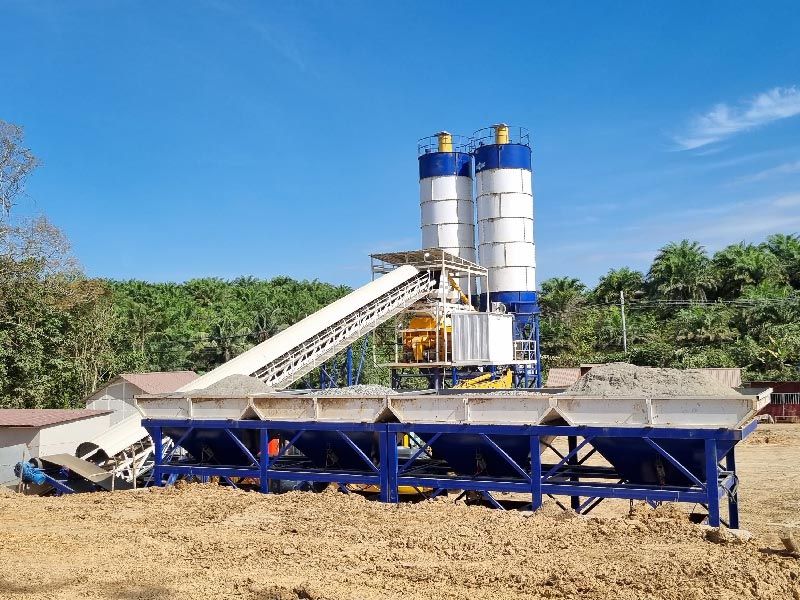As construction projects across Latin America grow in scale and complexity, remote inspection has become a practical and reliable way for buyers to verify equipment before shipment. For clients in countries such as Peru, Chile, and Mexico, remote inspection helps confirm that a concrete plant(planta de concreto) or a mobile concrete plant meets contract specifications, reducing the risk of costly rework and delays on site.
Why Remote Inspection Matters for Latin American Projects
Large infrastructure projects—roads, bridges, and urban development—depend on dependable equipment delivery. Factory visits are expensive and time-consuming when suppliers are overseas. Remote inspection offers timely access to test data, live video, and documentation, allowing stakeholders to approve a concrete plant Peru order or any regional delivery without an in-person visit. This transparency is particularly valuable when logistics, customs, and transportation challenges are common.
Key Benefits
- Faster approval cycles compared to in-person audits
- Lower travel and coordination costs for Latin American buyers
- Real-time technical verification of control systems and mixing accuracy
- Recordable evidence for after-sales support and warranty claims
Essential Stages of a Remote Inspection
Remote inspection should be a structured, documented process. The main stages—pre-inspection preparation, live functional testing, and final reporting—ensure nothing is missed before packing and shipment.
1. Pre-Inspection Preparation
Agreeing a detailed checklist with the supplier is the first step. For a concrete plant, typical checklist items include:
- Design and capacity verification against the purchase order
- Material quality certificates and steel structure inspection
- Control system configuration and HMI verification
- Packing and anti-corrosion treatment plans for international transport
Latin American customers should request bilingual documentation (Spanish/English) and ask for time-stamped test logs in advance.
2. Live Inspection and Functional Testing
During the live session, the factory runs the plant while streaming multiple camera angles and sharing live data. Key functional tests include:
- Pre-assembly verification—confirming structural fit and bolting
- Weighing and batching accuracy—checking the scale and dosing precision
- Mixing performance—evaluating homogeneity, cycle time, and discharge consistency
- Control system demonstration—validating automation sequences and alarms
- Environmental tests—running noise, vibration, and basic dust-suppression checks
For mobile concrete plant(planta de concreto movil) units, also verify folding mechanisms, transport locking systems, and rapid setup procedures through live demonstration to ensure quick on-site deployment.
3. Final Reporting and Approval
After testing, the supplier should deliver a comprehensive inspection packet: performance graphs, time-stamped videos, photos of critical components, and a signed checklist. Buyers should verify that any corrective actions were completed and recorded before giving final approval for packing and shipment.
Practical Tips to Improve Remote Inspection Outcomes
Use High-Quality Visuals and Multiple Angles
Insist on high-resolution streaming and pre-positioned cameras to capture the control panel, weighing units, mixers, and connection points. Multiple angles reduce ambiguity and help engineering teams assess mechanical tolerances remotely.
Request Live Data and Log Files
Real-time logs from PLCs, weigh controllers, and SCADA screens are critical. Ask for CSV or PDF exports of batch weights, cycle times, and alarm histories so your technical team can analyze performance metrics after the session.
Schedule Interactive Q&A
Allocate time for live Q&A during the test so technicians can demonstrate adjustments on request and clarify any deviations. This ensures issues are addressed immediately rather than appearing later during installation in Peru or other sites.
Integrating Remote Inspection with Shipping and Logistics
Approval should be tied to documented packing and transport readiness: anti-rust treatments, vibration-proofing, container loading plans, and clear labeling for customs. For concrete plant Peru(planta de concreto Perú) projects, confirm the supplier’s experience with regional carriers and inland transport constraints—this prevents damage in transit and ensures on-time delivery.
Preserve Test Evidence for After-Sales
Store videos and test reports in a shared repository. These artifacts support commissioning, training, and warranty claims—especially useful for customers who will manage installation remotely.
Conclusion
Remote inspection is a pragmatic, cost-effective approach for Latin American buyers to ensure the quality and performance of a concrete plant or mobile concrete plant before shipment. By following a structured inspection protocol—covering preparation, live functional testing, and thorough reporting—clients can reduce delivery risk, accelerate project schedules, and strengthen supplier relationships. For projects in Peru and across the region, remote inspection delivers the confidence and technical evidence needed to move from factory approval to successful on-site commissioning.

Comments
No comments yet. Be the first to react!